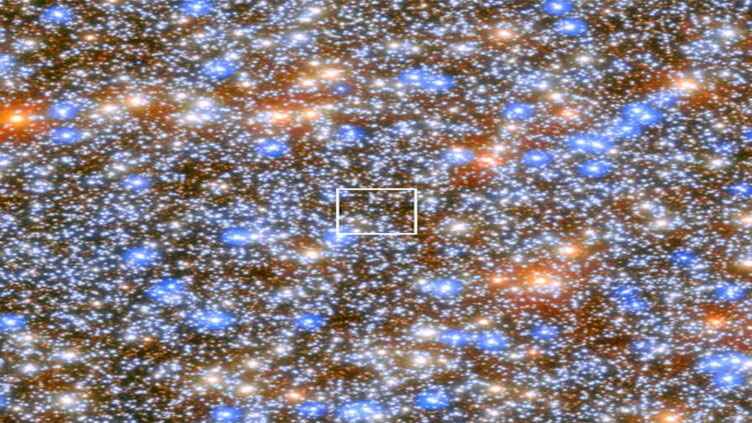Elusive mid-sized black hole spotted at center of swallowed galaxy

Technology
These are bigger than the class of ordinary black holes formed in the implosion of a single star
WASHINGTON (Reuters) - Astronomers have scrutinized a cluster of stars that is the apparent remnant core of a relatively small galaxy that was swallowed by the sprawling Milky Way 8 to 10 billion years ago. What lurks at the center of this cluster has them excited.
The researchers said on Wednesday the unusual motion of seven stars in this cluster provides compelling evidence for the presence of an elusive mid-sized black hole at its heart.
These are bigger than the class of ordinary black holes formed in the implosion of a single star but smaller than the behemoths residing at the nucleus of most galaxies.
The cluster, called Omega Centauri, contains about 10 million stars. The black hole within it is at least 8,200 times as massive as our sun, the researchers said.
The supermassive black hole called Sagittarius A* at the center of the Milky Way possesses 4 million times the mass of the sun. And that is dwarfed by supermassive black holes billions of times the mass of the sun in other galaxies.
"There has been a long debate whether intermediate-mass black holes exist in general, and specifically in Omega Centauri, and our detection might help to resolve that debate," said astronomer Maximilian Häberle of the Max Planck Institute for Astronomy in Germany, lead author of the study published in the journal Nature.
This black hole is located about 17,700 light-years from Earth. A light-year is the distance light travels in a year, 5.9 trillion miles (9.5 trillion km). The Milky Way's only larger-known black hole is Sagittarius A*, located about 26,700 light years from Earth.
Black holes are extraordinarily dense objects with gravity so strong not even light can escape, making it difficult to spot them. This one was detected based on how its gravitational pull influences the velocity of seven fast-moving stars in its vicinity, documented in two decades of Hubble Space Telescope observations.
The researchers believe the smaller galaxy, which had been perhaps 10% the Milky Way's size, harbored a black hole that, if left undisturbed, would have become supermassive as it fed off gas and other nearby material drawn by its gravitational pull.
But the galactic merger, which occurred when the Milky Way was about a quarter or third its current age, left the black hole frozen in time.
"In this merger process, the galaxy lost all of its gas, and hence the growth of its central black hole got interrupted, leaving it in an intermediate-mass state," Max Planck Institute for Astronomy astronomer and study co-author Nadine Neumayer said.
The merger stripped away most of the smaller galaxy's stars, leaving just the central batch - now the Omega Centauri star cluster.
"Intermediate-mass black holes have been suspected in the centers of low-mass galaxies or also in the center of certain star clusters. However, they have been very challenging to detect. Due to their lower mass with respect to supermassive black holes, their region of influence is small," Häberle said.
Other candidates for mid-sized black holes have been identified in previous research. Black holes that are the mass of a single star form when large stars explode at the end of their life cycle and the core collapses in on itself.
"The most likely scenario for the formation of the intermediate-mass black hole at the center of Omega Centauri is the collision and merging of very massive stars very early on during the formation of the star cluster.
These stars get very close to each other, collide and form even more massive stars that evolve to black holes fairly rapidly. The intermediate-mass black hole can grow via the merger of several of these black holes," Neumayer said.
These mid-sized black holes may be the key to understanding the formation of the supermassive ones.
"Intermediate-mass black holes are likely very common, especially in the early evolution of the universe," Neumayer said. "They are thought to be the seeds for supermassive black holes."



